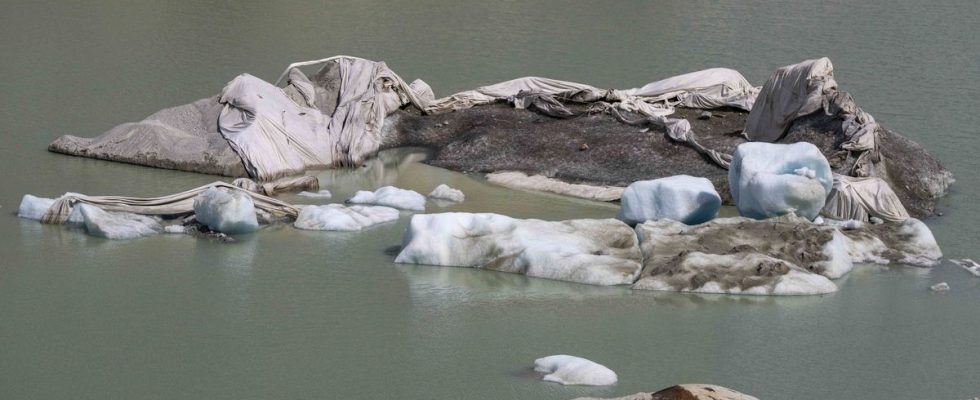The little snow in winter and very high temperatures in summer cost these masterpieces of nature 10% of their volume between 2022 and 2023, noted this Thursday the group of experts responsible for studying the cryosphere at within theSwiss Academy of Natural Sciences. Their conclusion on these “masterpieces” is therefore clear: Swiss glaciers are melting faster and faster.
After losing 6% in volume in 2022, a record year, they fell by another 4% this year. This is the second largest decline since measurements began, and as much as over the period 1960 – 1990.
Switzerland without glaciers is “possible”
“It’s a combination of the very bad succession of weather extremes and climate change” which makes these extremes more likely, explains Matthias Huss, who heads the Swiss glaciological survey network (Glamos), to the AFP. “If we continue at the pace we have experienced in recent years – everything is going even faster – every year will be a bad year,” he emphasizes.
“And we have seen such strong changes in the climate in recent years that it is entirely possible to imagine this country without glaciers,” recognizes the scientist. This means “all the small glaciers will be gone and the big glaciers will be much smaller, but there will still be some ice in the higher regions of the Alps and a few glaciers that we can show our grandchildren », the expert wants to hope. He also underlines that decisive action to “stabilize the climate”, by reducing CO2 emissions to zero as quickly as possible, could make it possible to preserve “a third of the ice formed in Switzerland”.
Water tower
In recent years, melting has affected the entire Alpine country, considered the water tower of Europe thanks to its 1,400 glaciers, which feed countless lakes, rivers and streams. In 2023, in the south of Valais and in the Engadine, ice melting of several meters was measured at more than 3,200 meters, while the glaciers were still in equilibrium at this altitude a few years ago.
Above 1,000 meters above sea level, during the first half of February, the measured snow depths were generally a little higher than during the little snowy winters of 1964, 1990 or 2007. But the melting reached new records in during the second half of February, and snow depths were only about 30% of the multi-year average.
A major threat
According to the Intergovernmental Panel on Climate Change (IPCC), melting ice and snow is one of the 10 major threats caused by global warming.
According to another study published in January in the journal Sciencehalf of the glaciers on Earth are condemned to disappear by the end of the century if the rise in temperatures is limited to 1.5 ° C compared to the pre-industrial period, the most ambitious objective of the agreement Paris on the climate.

